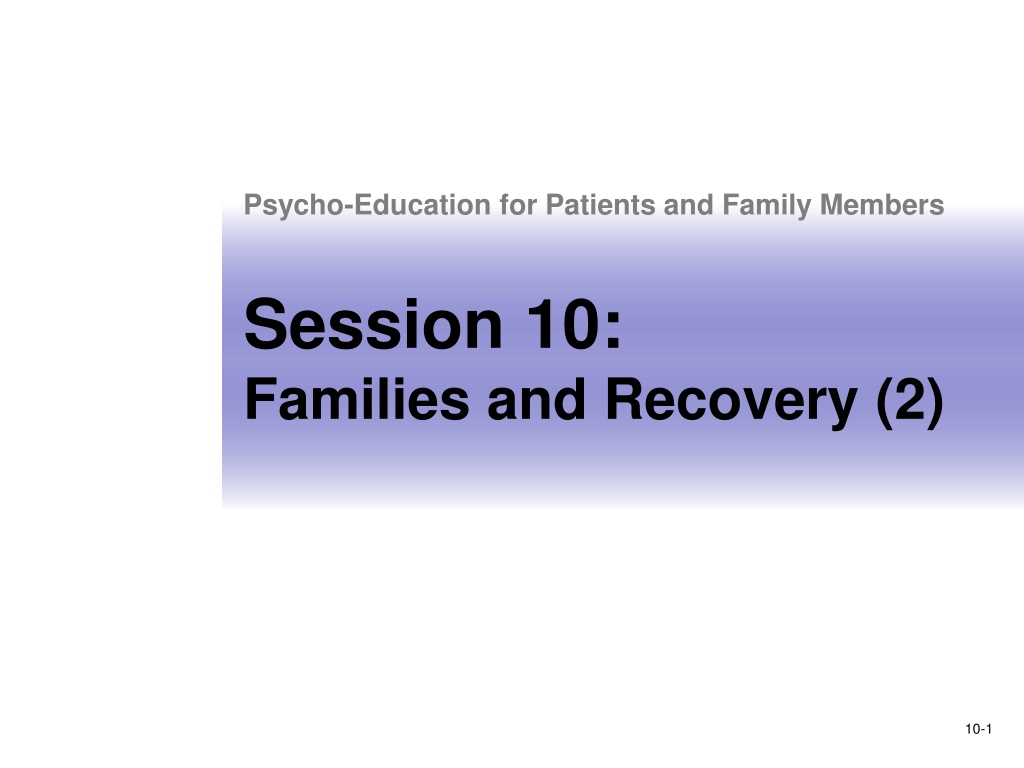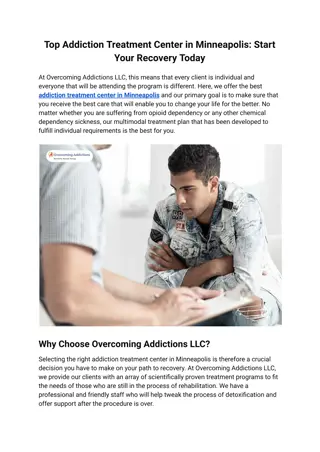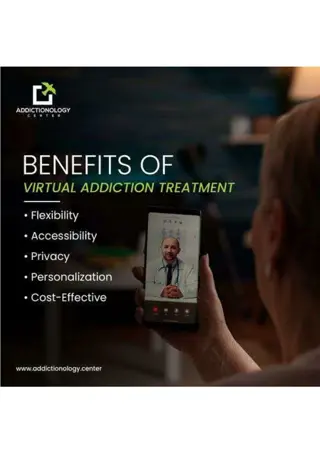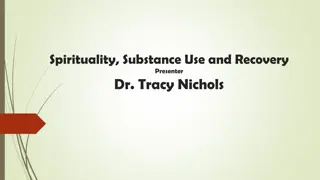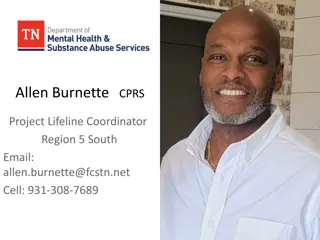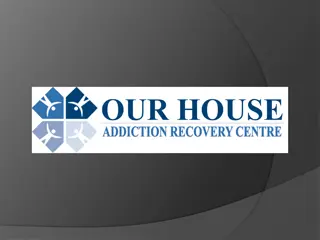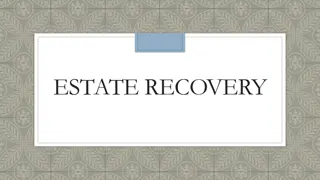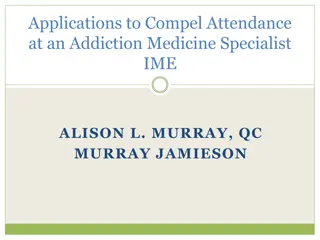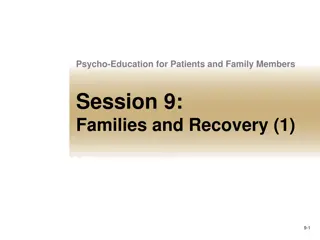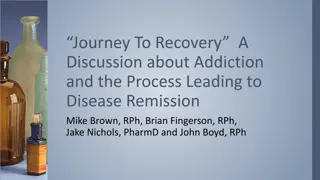Understanding the Stages of Recovery in Addiction: A Comprehensive Guide
Explore the various stages of recovery in addiction, including Withdrawal, Honeymoon, The Wall, and Readjustment. Learn how each stage is characterized and the challenges and progress associated with them. Gain insights into supporting loved ones through their recovery journey.
Download Presentation

Please find below an Image/Link to download the presentation.
The content on the website is provided AS IS for your information and personal use only. It may not be sold, licensed, or shared on other websites without obtaining consent from the author. Download presentation by click this link. If you encounter any issues during the download, it is possible that the publisher has removed the file from their server.
E N D
Presentation Transcript
Psycho-Education for Patients and Family Members Session 10: Families and Recovery (2) 10-1
Recovery Stages Stage 1: Withdrawal (1-2 weeks) Stage 2: Early Abstinence or Honeymoon (following 1 month) Stage 3: Protracted Abstinence or the Wall (following 3-4 months) Stage 4: Adjustment/Resolution (following 2 months) 10-2
Question: How is the Withdrawal stage (first 1-2 weeks from abstinence) characterized? 1-3
Withdrawal Lasts 1 to 2 weeks Craving and depression Low energy, difficulty sleeping, increased appetite, and difficulty concentrating, excessive respiration, weight loss, fever, infection, hallucination, illusion, confusion 10-4
Question: How is the Honeymoon stage (following 1 month) characterized? 1-5
Honeymoon Lasts about 1 month following the Withdrawal stage Increased energy, enthusiasm, and optimism People often feel they are cured when they reach this stage 10-6
Question: How is the Wall stage (following 3 to 4 months) characterized? 1-7
The Wall Lasts about 3 to 4 months following the Honeymoon stage Hardest stage of recovery Depression and irritability Difficulty concentrating Low energy and loss of enthusiasm High risk of relapse 10-8
Question: How is the Readjustment stage (following 2 or more months) characterized? 1-9
Readjustment Last 2 months or longer following the Wall stage The person in recovery and the family begin returning to more normal lifestyle After extended abstinence, the person in recovery and family members begin working on marital, emotional, and psychological issues that will strengthen the family 10-10
Goals for Withdrawal (mainly for those in outpatient treatment) Person in recovery Discontinue use of Shabu Learn specific techniques for avoiding relapse Learn about the process of addiction and about drug effects Family members Decide to be part of recovery process Recognize that addiction is a medical condition 10-11
Goals for the Honeymoon (mainly for those in outpatient treatment) Person in recovery Improve physical health Identify personal triggers and relapse justifications Use targeted techniques to stay abstinent Family members Work to support recovery Recognize and discontinue triggering interactions 10-12
Goals for the Wall (mainly for those in outpatient treatment) Person in recovery Maintain stable abstinence from all drugs Repair significant relationships Develop a recovery support system outside the treatment center Recognize and cope with dangerous emotions Family members Decide whether to recommit to the relationship Begin finding ways to enrich own lives Practice healthy communication skills 10-13
Goals for Readjustment Person in recovery Monitor components of successful recovery Recognize relapse indicators and prepare responses Clarify new roles in healthy relationships Set goals for continuing a new lifestyle after the program Family members Accept limitations of living with a person in recovery Develop an individual, healthy, balanced lifestyle Monitor self for relapses to former behaviors Be patient with the process of recovery 10-14
Key Relapse Issues for People in Recovery Friends who use Shabu Environmental cues associated with Shabu use Severe cravings Protracted abstinence the Wall (for those in outpatient treatment) Connection between Shabu and sex Boredom 10-15
Key Relapse Issues for Family Members Common problems preceding a slip back into old behaviors for family members are: Fear of the person in recovery returning to Shabu use Fear of being alone Lack of individual goals and interests Inability to release responsibility for the person in recovery 10-16
